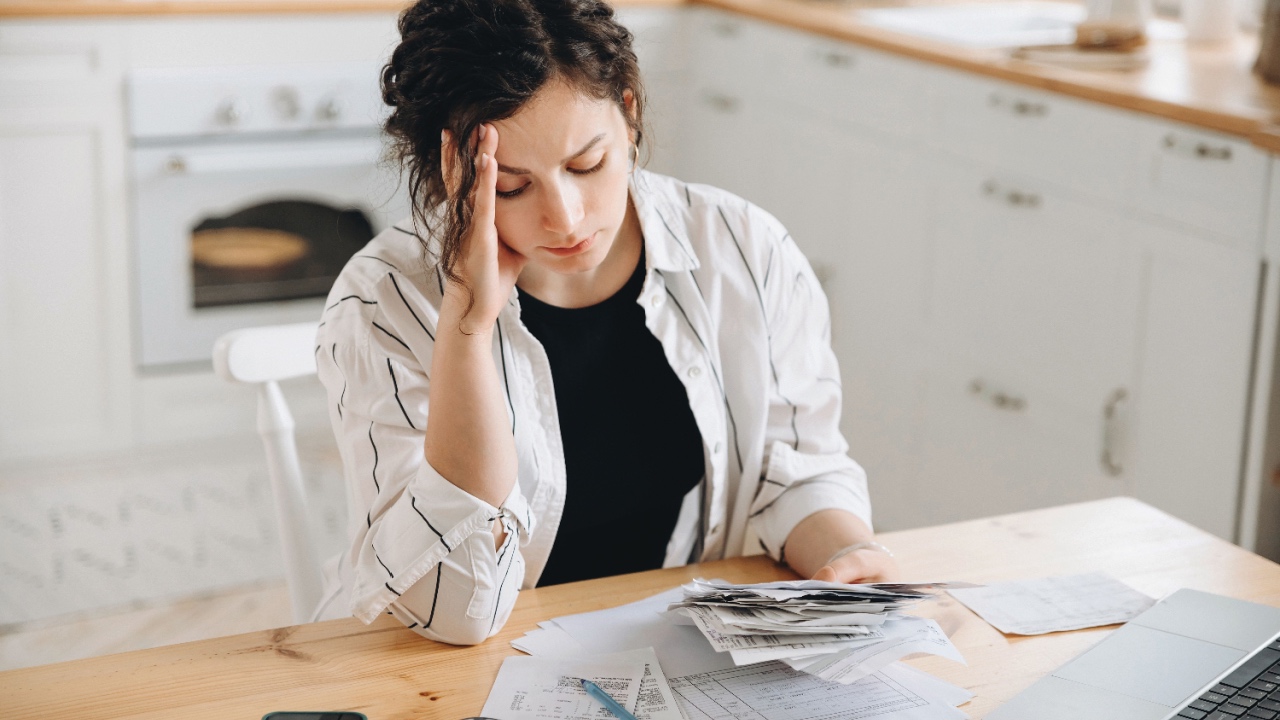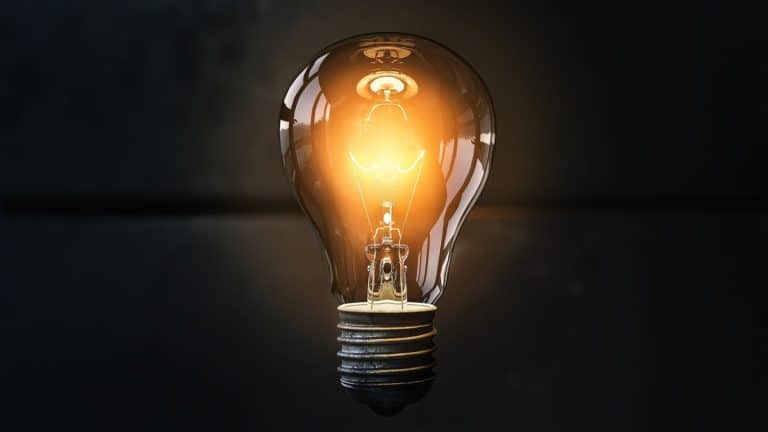How to Murder Your Debt Without Losing Your Mind

Do you feel like you’re drowning in debt and it seems as if you’ll never get your head above water? You’re not alone. Business Insider reports that the average American owes $104,215 between vehicle loans, credit cards, mortgage loans, and other types of personal loans. With prices of everything skyrocketing, it makes it even more challenging to pay for basic living expenses, let alone try to chip away at a mounding pile of debt you may owe.
Many avoid dealing with the heavy financial burden they carry around because it can feel like a lose-lose situation. However, the good news is that even if you’re not in the position to pay a lot of money towards the amount you owe, there are some steps you can take to eventually become debt-free.
Let’s dive into what key steps you can take to start tackling your debt without losing your mind and learn how to make room in your budget for fun, too!
How to Get out of Debt: 9 Key Steps
I know what it’s like to be buried beneath a pile of bills with no end in sight. I also know how irritating it is when you listen to financial gurus telling you to stop doing anything you enjoy because you have to pay off your debt. While it is vital to buckle down, you also need to have a plan that is realistic that you can stick to.
Although it may take a bit longer, it will be more sustainable and help you enjoy yourself along the way. So, use the following tips to get back on top of your money game and lessen your financial burden.
Tally up what you owe
You need to know how much you owe before you can begin paying everything off. Add up all of your loans and credit card balances to get a debt total, then you can create a realistic plan for paying down your debt.
To get the actual balances, you should log in to each account or call the lender rather than going by what your last month’s statement says. The reason is that you may have used your credit cards since your last statement was mailed, so you may owe more money than you think.
I know this has happened to me before! Checking the most up-to-date balance will ensure you have the right amount you will need to pay.
Utilize the right debt payoff strategy
I always say that budgets and debt payoff strategies are like diets. Just because one works for one person doesn’t mean it’s the right one for you. Everyone’s personality and financial situation are different, so it’s vital to pick a debt payoff plan that is easy for you to stick to.
The two most popular debt payoff strategies are the Debt Snowball and Avalanche methods. Here is a breakdown of each to help you decide which is best for you:
Debt snowball method
The debt snowball method is a great strategy for those who need to see results quickly with small wins. It’s called the debt snowball method because, similar to a snowball rolling down a hill, it gets bigger and has more momentum as it goes.
You start by paying off your smallest debt first. Once that is paid off, you use the amount you were paying on that loan and apply it to the next smallest balance. You repeat this until all your loans are paid off.
So, let’s say you have a credit card with a $500 balance, an auto loan with a $2,500 balance, and a personal loan with a $4,000 balance. You would pay off the smallest amount of $500 first. Once that is paid off, you will begin paying off the $2,500, then proceed to the larger loan of $4,000. Of course, you will still need to pay the minimum on all of the loans for this method to work correctly.
The avalanche method
I prefer this debt repayment strategy because it saves you a bundle of money in expensive interest. With this method, you pay the debts with the highest interest rates first rather than those with the smallest balances.
So, if you have a credit card with an interest rate of 18%, another for 24%, and a personal loan with an interest rate of 8%, you would start with the card with the 24% rate first. Then, once that is paid off, you would apply the amount you were paying that debt to the next highest-rate loan.
The rates on credit cards can be horrendous, with some cards reaching as high as 36% interest.
You can end up paying thousands of dollars in interest alone if you don’t pay the cards off quickly. For example, let’s say you have a credit card with a balance of $5,000, with an average interest rate of 24.72%, and you pay it off in three years. According to calculator.net, you would end up paying a whopping $2,130.14 in interest! So, this method is better when it comes to saving money on interest.
Choose whatever debt payoff method that will keep you motivated to stay the course until you pay everything off and get out of debt.
Seal up leaks in your budget
Think of your budget like a boat: If it has multiple leaks, it’s going to sink fast. It may surprise you at how many “leaks” you have in your budget. I know at one time, I had subscriptions charged to my credit card I forgot about, and it added up pretty quickly.
In fact, according to Yahoo Finance, the average American spends almost $1,000 a year on subscriptions. So, even one or two unnoticed can eat up the money you could allocate towards your debt. Comb through your credit card and banking statements to see what is being charged every month.
Whether it’s unforgotten subscriptions, memberships you don’t use anymore, or any other expenses you can live without, go ahead and cancel them and seal up those budget leaks fast.
Stop impulse purchases
I’m not going to say never to treat yourself, but constant impulse purchases can derail your finances. This is especially true if you buy the items using credit cards because you end up paying a heck of a lot more for that item than it’s worth due to expensive interest.
Impulse spending adds up fast and is a common habit among Americans.
Capital One Shopping reports that the average consumer spends $281.75 a month, and 73% of Americans say most of their purchases are unplanned. This shows how hard it is to resist spending money on something against our better judgment. But there are some simple tricks to try that will help stop impulse buying in its tracks:
Avoid your triggers
Now, I know all too well the difficulty of spending money on something I didn’t plan on, which is why I have to avoid stores or sites that trigger me to spend my hard-earned money when I’m trying to tighten up my financial belt a bit.
Stores seem to be skilled at placing items in areas that encourage you to buy them. This is why it seems like extra items somehow hopped into your shopping cart on your way to the checkout lane. Avoiding specific isles and sticking to a list can help you fight the urge to purchase unnecessary items.
Have a waiting period before you buy
Another trick that helps is to have a waiting period before you buy. I use this when shopping online because I can add something to the cart but I don’t purchase it right away. I’ll give myself a few days, and then if I still really want it and it’s not super expensive, I will allow myself to buy it.
This can help you determine if it’s just an impulse purchase or if you are buying it because you want it.
Use cash instead of cards
Switching to cash also really lowers impulse spending. There are a couple of reasons for this. One is that you can’t use cash to pay when shopping online. The other is quite interesting, in my opinion. Cashmatters.org states there is a “pain in paying with cash” because people have negative feelings when they part with a physical item, such as cash when they have a limited supply of the item.
I guess swiping plastic makes it less painful because you don’t see your money going anywhere. So, using cash can help prevent impulse spending in numerous ways.
Dedicate “fun money” in your budget
Now, this may sound a bit counterproductive but having money in your budget to treat yourself or go have fun is essential. It can make your new goal of being debt-free a less painstaking journey, and life shouldn’t be all work and no fun anyway!
Also, budgeting your fun money can make it easier to quit impulse buying. The reason is you will know that you have a specific amount to spend in your budget, which helps you not overspend but still enjoy yourself a bit.
So, when you create your monthly budget, have a spot in there for your fun money. You can use some of the money you save from sealing up your leaky budget for fun and the rest toward paying your debt.
Boost your income
It can be difficult to just make ends meet when you’re robbing Peter to pay Paul. So, the easiest way to pay off debt faster is to increase your monthly income. Now, you don’t want to burn yourself out, but you can start bringing in cash fast by starting a side hustle.
CNBC reports that “side hustlers bring in an extra $891 per month.” I have worked some side hustles that brought in hundreds to thousands of dollars a month. Pet-sitting, freelance writing, virtual assisting, flipping items for cash, and delivering food are among some of the high-earning hustles you can try.
Just think, even if you earned an extra $500 a month, that’s $6,000 in a year! That would help you get out of debt quickly, and you can even choose a side hustle you like to do.
Automate your payments
One of the simplest things you can do to help avoid paying bills late and paying off debt faster is to automate your payments. Paying late raises costly fees and can even increase your credit card rate depending on the company. It’s hard enough to get those balances paid off without additional costs.
So, you can avoid forgetting to pay and even pay additional amounts toward your debt by setting up automatic payments. You can opt-in for auto-pay with the creditor or set it up with your financial institution. You will still want to monitor your accounts to ensure they are being paid correctly.
Skip using credit cards and switch to reloadable gift cards
It’s way too easy to reach for a credit card to pay for something, which can wipe out all of your hard work of paying them down. So, skip using them altogether and opt for a reloadable gift card instead. You can buy a prepaid gift card that allows you to “load” money onto it.
This can be an excellent option if you prefer using cards rather than cash to pay for things such as gas and groceries. This is also an amazing hack to keep your spending in check while traveling or shopping online.
Consider a debt consolidation Loan
In some cases, consolidating your debt into one loan may be worth your while. For example, if you have multiple loans or credit cards with high interest rates, qualifying for a lower-rate personal loan could save you money in interest.
An unsecured personal loan is ideal if you have good credit and steady employment because you don’t have to have collateral as you do with a secured loan. However, secured personal loans tend to have lower interest rates because these types of loans are less risky for the lender. This is because they use collateral such as a vehicle with a clear title to secure the loan. If you don’t pay, then they can repossess the car to recoup their costs.
Make sure the new loan will cost less in interest, or you will be better off using a debt payoff strategy instead. One huge perk of consolidating your debt is that you only have to worry about paying one payment per month rather than keeping up with due dates for various loans. This can simplify your budget and make paying it off easier.
Take These Steps to Get Out of Debt and Work Towards Financial Freedom!
Debt is a massive stressor that can cause a slew of issues for your finances and your health, which is why it’s important to dump debt as fast as you can without adding more stress to your life.
Taking these steps can help you create a realistic debt payoff strategy and pay off those loans while still having a little bit of money for fun. Once you get out of debt, you can start saving that extra money and work your way to financial freedom!




